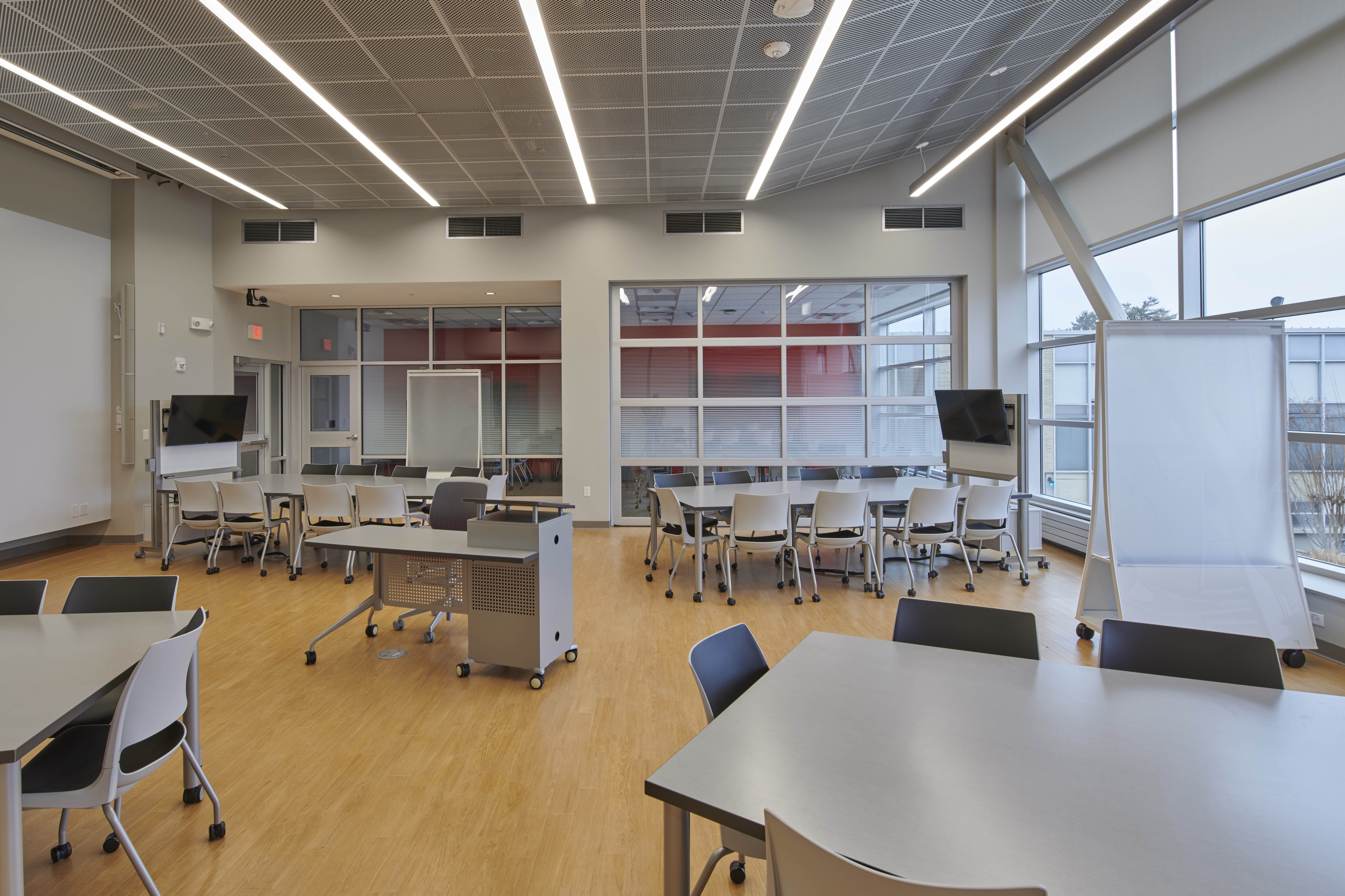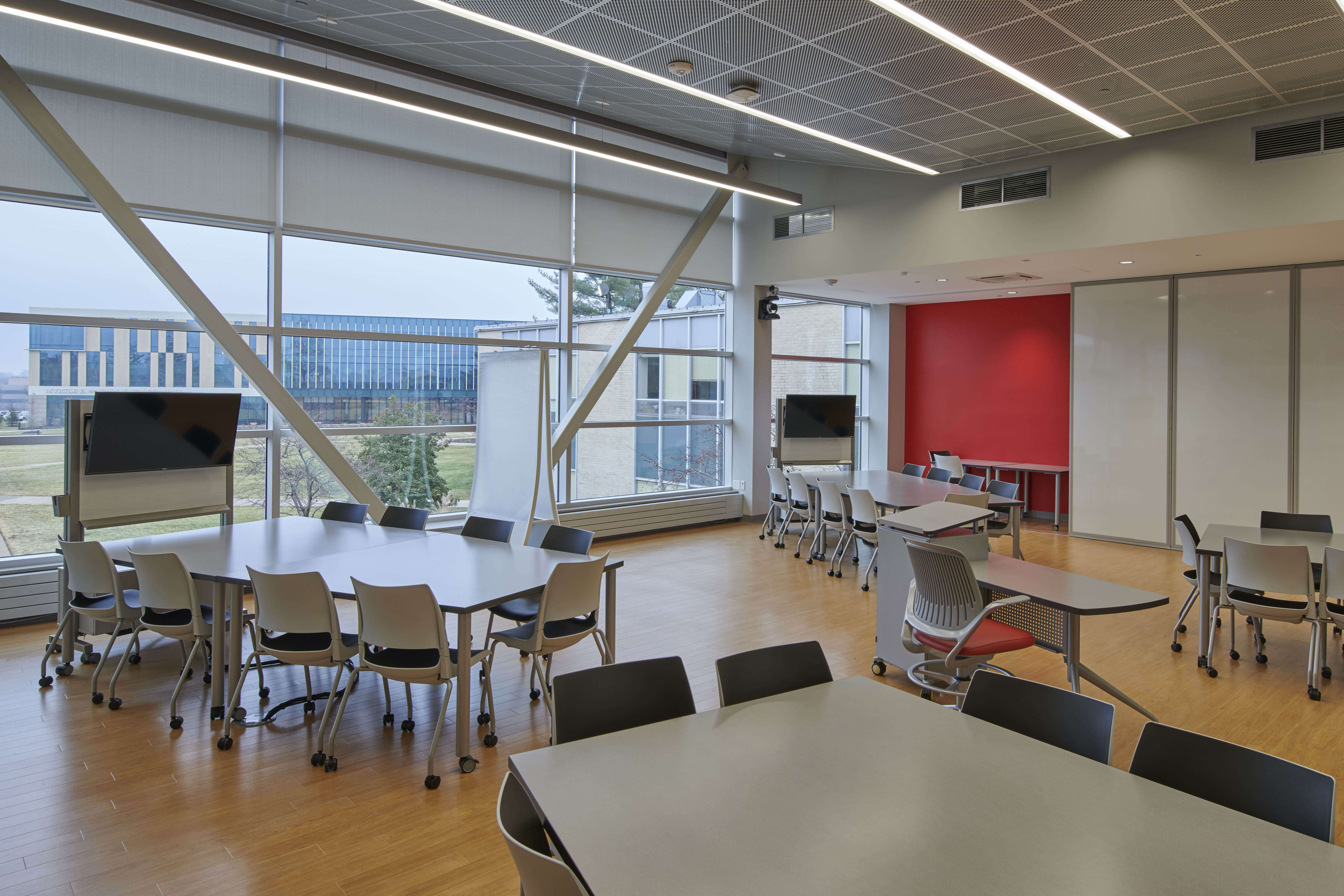Susan Bartel, EdD, associate professor of higher education leadership, teaches design thinking to doctoral students to help them develop greater empathy.
 Susan Bartel, EdD, associate professor of higher education leadership, recently tested a newly opened high-tech classroom by assigning a team-based, problem-solving project. The technology enabled Bartel to be more creative in teaching design thinking, a lesson that helps doctoral students develop empathy as a leadership skill.
Susan Bartel, EdD, associate professor of higher education leadership, recently tested a newly opened high-tech classroom by assigning a team-based, problem-solving project. The technology enabled Bartel to be more creative in teaching design thinking, a lesson that helps doctoral students develop empathy as a leadership skill.
Design thinking is a technique most often used in the creation of consumer products, where the emphasis is placed on the user, not the developer, Bartel says. However, used as a problem-solving tool the process creates empathy and builds key observation skills.
“We have to learn how to think differently to solve problems, and I’ve been exploring that with design thinking,” says Bartel. “Administrators benefit by using this approach because it helps them address problems facing higher education from a different perspective.”
The recent challenge Bartel posed for her students: address campus parking issues.
A new campus learning space, located in the Anheuser-Busch Hall, offers advanced technology that helps engage students in the project more deeply, she says. The functionality of the room is flexible and allows for various forms of interaction among peers and faculty-to-student.
Administrators benefit by using this approach because it helps them address problems facing higher education from a different perspective. ~ Susan Bartel, EdD
 “With multiple technology huddles, students work in teams, and then each team projects their ideas at the same time on a large multi-screen wall,” Bartel says. “This allows students to see how we get stuck thinking the same way and also how different some ideas can be.”
“With multiple technology huddles, students work in teams, and then each team projects their ideas at the same time on a large multi-screen wall,” Bartel says. “This allows students to see how we get stuck thinking the same way and also how different some ideas can be.”
The doctoral program has cohorts both on-ground and in an online delivery model. Bartel was challenged to create a way her online students would have a similar experience for understanding design thinking. Working with a Maryville instructional designer, she created a computerized scenario to mimic the experience of the on-ground students.
For both cohorts, students were charged with creating a prototype, a project that still involves paper, glue, cardboard, construction paper and craft or building materials, she says.
“It was an interesting juxtaposition of technology and manual design,” Bartel says.
“Everyone understands parking problems on a personal level,” she says. “But we had to consider the needs of all the people who use the university—students, faculty, staff, alumni and community members. By assuming the perspective of someone else, my students could be more creative and think more freely because it wasn’t their perspective.”
The project wasn’t so much about parking, as it was about learning to be observant and empathetic. Using the process of design thinking helps her doctoral students begin to understand the importance of empathy in college administration, Bartel says. “And if I can upend my students’ way of thinking, then I know I’m a good teacher.”
